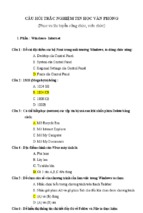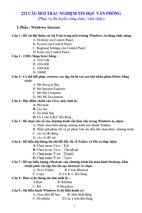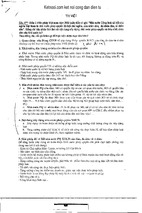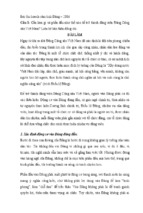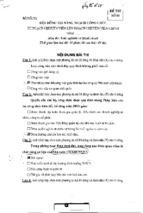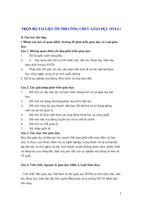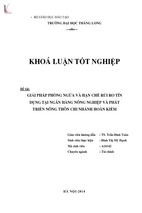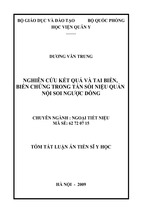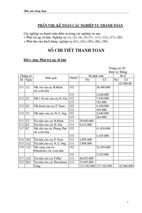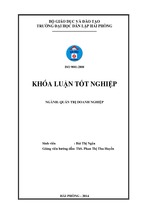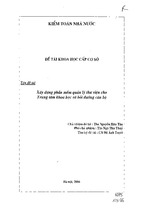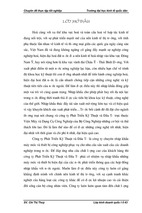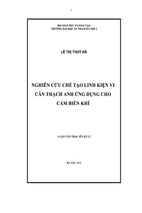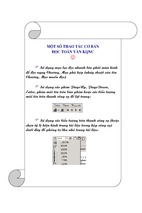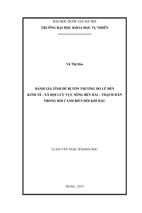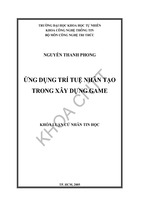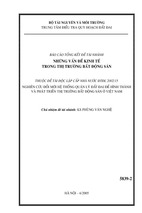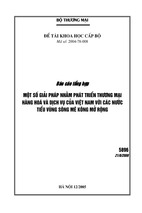Cognitive Linguistics (CL) is an approach to the study of language informed by
both linguistics and psychology. It describes how language interfaces with cognition,
and how it adapts in the course of language usage, phylogenetically in language
evolution, ontogenetically in language acquisition, and moment-to-moment
in situated, on-line language processing and performance. Second Language
Acquisition (SLA) involves the study of the cognitive representations and mechanisms
of second language processing, their time-course of acquisition, and,
where possible and feasible, their relevance to instruction.
HANDBOOK OF COGNITIVE
LINGUISTICS AND SECOND
LANGUAGE ACQUISTION
Cognitive Linguistics (CL) is an approach to the study of language informed by
both linguistics and psychology. It describes how language interfaces with cognition, and how it adapts in the course of language usage, phylogenetically in language evolution, ontogenetically in language acquisition, and moment-to-moment
in situated, on-line language processing and performance. Second Language
Acquisition (SLA) involves the study of the cognitive representations and mechanisms of second language processing, their time-course of acquisition, and,
where possible and feasible, their relevance to instruction.
The Handbook of Cognitive Linguistics and Second Language Acquisition brings
these two areas of theory and research together. It provides in nine chapters
making up Part II, “Cognitive Linguistics and cognition,” up-to-date coverage of
theoretical and empirical issues in the rapidly developing domain of CL research.
The nine chapters in Part III, “Cognitive Linguistics, Second Language Acquisition, and L2 instruction” demonstrate the relevance of these basic CL concepts,
and theoretical frameworks for researching them, to the fields of SLA and
language pedagogy. The chapters are written by acknowledged experts in the fields
of psychology, linguistics, and SLA, and an extensive agenda for future research
linking them is proposed both in individual chapters and in synthesis in the final
chapter. This handbook, thus, provides a new appreciation of the relationships
between cognitive theory, first and second language acquisition research, and their
pedagogic applications.
Peter Robinson is Professor of Linguistics and SLA in the Department of
English, Aoyama Gakuin University, Tokyo. His books include Consciousness,
Rules and Instructed Second Language Acquisition (1996), Lang; Cognition and Second
Language Instruction (2001), Cambridge University Press; and Individual Differences
and Instructed Language Learning (2002), Benjamins.
Nick C. Ellis is Professor of Psychology and Research Scientist in the English
Language Institute at the University of Michigan. His research interests include
psycholinguistic, neuroscientific, applied cognitive, and emergentist aspects of
second language acquisition. He edited Implicit and Explicit Learning of Languages
(1994), Academic Press and co-edited Handbook of Spelling: Theory, Process and
Intervention (1994), Wiley.
HANDBOOK OF
COGNITIVE
LINGUISTICS AND
SECOND LANGUAGE
ACQUISITION
Edited by
Peter Robinson
Aoyama Gakuin University, Japan
and
Nick C. Ellis
University of Michigan, U.S.A.
First published 2008
by Routledge
270 Madison Ave, New York, NY 10016
Simultaneously published in the UK
by Routledge
2 Park Square, Milton Park, Abingdon, Oxon OX14 4RN
This edition published in the Taylor & Francis e-Library, 2008.
“To purchase your own copy of this or any of Taylor & Francis or Routledge’s
collection of thousands of eBooks please go to www.eBookstore.tandf.co.uk.”
Routledge is an imprint of the Taylor & Francis Group, an informa business
© 2008 Taylor & Francis
All rights reserved. No part of this book may be reprinted or
reproduced or utilized in any form or by any electronic,
mechanical, or other means, now known or hereafter
invented, including photocopying and recording, or in any
information storage or retrieval system, without permission in
writing from the publishers.
Trademark Notice: Product or corporate names may be
trademarks or registered trademarks,
and are used only for identification
and explanation without intent to infringe.
Library of Congress Cataloging in Publication Data
Robinson, Peter
Handbook of cognitive linguistics and second language acquisition / by
Peter Robinson and Nick C. Ellis.
p. cm.
Includes index.
ISBN 978–0–8058–5351–3 – ISBN 978–0–8058–5352–0
ISBN 978–0–203–93856–0
1. Cognitive grammar. 2. Second language acquisition. 3. Language
and languages – Study and teaching. I. Ellis, Nick C. II. Title.
P165.R63 2008
410–dc22
2007026713
ISBN 0-203-93856-9 Master e-book ISBN
ISBN10: 0–805–85351–0 (hbk)
ISBN10: 0–805–85352–9 (pbk)
ISBN10: 0–203–93856–9 (ebk)
ISBN13: 978–0–805–85351–3 (hbk)
ISBN13: 978–0–805–85352–0 (pbk)
ISBN13: 978–0–203–93856–0 (ebk)
CONTENTS
List of figures
List of tables
List of contributors
viii
ix
x
PART I
Introduction
1
1 An introduction to Cognitive Linguistics, Second
Language Acquisition, and language instruction
3
NICK C. ELLIS AND PETER ROBINSON
PART II
Cognitive Linguistics and cognition
2 Aspects of attention in language
25
27
LEONARD TALMY
3 Prototypes in Cognitive Linguistics
39
JOHN R. TAYLOR
4 Cognitive Grammar as a basis for language instruction
66
RONALD W. LANGACKER
5 Word Grammar, Cognitive Linguistics, and second
language learning and teaching
RICHARD HUDSON
v
89
CONTENTS
6 Spatial language learning and the functional geometric
framework
114
KENNY R. COVENTRY AND PEDRO GUIJARRO-FUENTES
7 Language without grammar
139
WILLIAM O’GRADY
8 Children’s first language acquistion from a usage-based
perspective
168
ELENA LIEVEN AND MICHAEL TOMASELLO
9 Construction learning and Second Language Acquisition
197
ADELE E. GOLDBERG AND DEVIN CASENHISER
10 Usage-based grammar and Second Language Acquisition
216
JOAN BYBEE
PART III
Cognitive Linguistics, Second Language Acquisition,
and L2 instruction
237
11 Learning to talk about motion in a foreign language
239
TERESA CADIERNO
12 Gestures and Second Language Acquisition
276
MARIANNE GULLBERG
13 Conceptual transfer and meaning extensions
306
TERENCE ODLIN
14 A unified model
341
BRIAN M AC WHINNEY
15 Usage-based and form-focused language acquisition:
The associative learning of constructions, learned
attention, and the limited L2 endstate
NICK C. ELLIS
vi
372
CONTENTS
16 Corpus-based methods in analyses of Second Language
Acquisition data
406
STEFAN TH. GRIES
17 Teaching construal: Cognitive Pedagogical Grammar
432
MICHEL ACHARD
18 Cognitive Linguistics and second language instruction
456
ANDREA TYLER
19 Conclusion: Cognitive Linguistics, Second Language
Acquisition and L2 instruction—issues for research
489
PETER ROBINSON AND NICK C. ELLIS
Author index
Subject index
547
555
vii
FIGURES
3.1
4.1
4.2
4.3
5.1
5.2
5.3
5.4
5.5
5.6
5.7
5.8
5.9
6.1
6.2
6.3
14.1
17.1
18.1
18.2
18.3
A network for allophones of the phoneme /t/
Profiling of things and relationships
Contrasting profiles
A constructional schema
A tiny network centered on the adjective FAST
An English speaker learns the French word chat
Loves inherits its subject properties from Verb
The morphology of plural nouns
Subject–auxiliary inversion in a network
Three languages that I know about and the words I
know in them
What I know about the speaker of two English words
An abstract network showing three correlated properties
A new node carries the default properties
Examples of scenes used in video experiments
manipulating geometry and location control
Examples of scenes showing three positions of a shield
Visuo-spatial scenes illustrating “the bird is in the dish”
versus “the bird is on the dish”
Part of speech organization in the DevLex network
Plural formation
English modal verbs
Wilcoxon Signed Ranks test for “Hedges” in Drafts 1 and
2 of feedback and minimal feedback groups
Wilcoxon Signed Ranks test for “Boosters” in Drafts 1
and 2 of EL and USLD groups
viii
52
69
74
75
93
95
97
98
99
101
102
106
107
118
121
133
343
437
473
480
480
TABLES
9.1
15.1
15.2
18.1
18.2
18.3
18.4
15 mothers’ most frequent verb and number of
verbs types
A contingency table showing four
possible combinations of events
The design and outcome of Chapman & Robbins’ (1990)
cue interaction experiment illustrating “blocking”
Wilcoxon Signed Ranks test for minimal feedback group
Wilcoxon Signed Ranks test for feedback group
Comparison of modal verb usage before and after
modal lesson
Correct modal usage by individual subject
ix
208
375
386
479
479
483
483
CONTRIBUTORS
Michel Achard Rice University, U.S.A.
Joan Bybee University of New Mexico, U.S.A.
Teresa Cadierno University of Southern Denmark, Denmark.
Devin Casenhiser Princeton University, U.S.A.
Kenny R. Coventry Northumbria University, U.K.
Nick C. Ellis University of Michigan, U.S.A.
Adele E. Goldberg Princeton University, U.S.A.
Stefan Th. Gries University of California, Santa Barbara, U.S.A.
Pedro Guijarro-Fuentes University of Plymouth, U.K.
Marianne Gullberg Max Planck Institute for Psycholinguistics,
Netherlands.
Richard Hudson University College London, U.K.
Ronald W. Langacker University of California, San Diego, U.S.A.
Elena Lieven Max Planck Institute for Evolutionary Anthropology,
Germany.
Brian MacWhinney Carnegie Mellon University, U.S.A.
Terence Odlin Ohio State University, U.S.A.
William O’Grady University of Hawaii, U.S.A.
Peter Robinson Aoyama Gakuin University, Japan.
Leonard Talmy University at Buffalo, State University of New York,
U.S.A.
John R. Taylor University of Otago, New Zealand.
Michael Tomasello Max Planck Institute for Evolutionary
Anthropology, Germany.
Andrea Tyler Georgetown University, U.S.A.
x
Part I
INTRODUCTION
1
AN INTRODUCTION TO
COGNITIVE LINGUISTICS,
SECOND LANGUAGE
ACQUISITION, AND
LANGUAGE INSTRUCTION
Nick C. Ellis and Peter Robinson
Cognitive Linguistics (CL) is about language, communication, and cognition. They are mutually inextricable. Cognition and language create each
other. Language has come to represent the world as we know it; it is
grounded in our perceptual experience. Language is used to organize,
process, and convey information, from one person to another, from one
embodied mind to another. Learning language involves determining
structure from usage and this, like learning about all other aspects of the
world, involves the full scope of cognition: the remembering of utterances and episodes, the categorization of experience, the determination
of patterns among and between stimuli, the generalization of conceptual
schema and prototypes from exemplars, and the use of cognitive models,
of metaphors, analogies, and images in thinking. Language is used to
focus the listener’s attention to the world; it can foreground different
elements in the theatre of consciousness to potentially relate many different stories and perspectives about the same scene. What is attended is
learned, and so attention controls the acquisition of language itself. The
functions of language in discourse determine language usage and language
learning. Cognition, consciousness, experience, embodiment, brain, self,
and human interaction, society, culture, and history are all inextricably
intertwined in rich, complex, and dynamic ways in language. Yet despite
this complexity, there are patterns everywhere. Patterns that are not preordained by god, by genes, by school curriculum, or by other human
policy, but patterns that emerge—synchronic patterns of linguistic organization at numerous levels (phonology, lexis, syntax, semantics, pragmatics, discourse genre, . . .), dynamic patterns of usage, diachronic patterns
3
N I C K C . E L L I S A N D P E T E R RO B I N S O N
of language change (linguistic cycles of grammaticization, pidginization,
creolization, . . .), ontogenetic developmental patterns in child language
acquisition, etc. CL investigates these patterns, the cross-linguistic and
panchronic generalities as well as the more specific patterns of particular
languages, cultures, times, individuals, and places. As a discipline, it is a
relatively new area of linguistic and psycholinguistic enquiry, dating back
perhaps to 1990, when the first journal, Cognitive Linguistics, dedicated to
this approach was published.
CL shares many of the assumptions of more broadly defined functional linguistics, which sees the processing conditions of language performance, and the communicative goals and intentions of language users
as shaping influences on language structure, but CL seeks to go beyond
these functional explanations of linguistic form to further explain how
language mutually interfaces with conceptual structure as this becomes
established during child L1 development and as it becomes available for
change during adult L2 language learning. As Langacker notes, “However
great its functional motivation, the structure of a language cannot be
predicted in full and precise detail on the basis of the motivating factors”
(1999, p. 19). The additional cognitive commitment of CL is to specify
the interface of linguistic representation (grammatical factors), which can
be used to communicative effect in producing utterances, with other
aspects of conceptual structure (e.g., semantic factors, such as our concepts of time, and spatial location), as well as with the constraints
imposed by the architecture of cognitive processes, and the structure of
cognitive abilities (e.g., psychological factors, such as those involved in
the allocation and inhibition of attention).
Because CL holds that the basic units of language representation are
constructions—form-meaning mappings, conventionalized in the child
L1 learner and adult L2 learner speech communities, and gradually
entrenched as language knowledge in the child L1 or adult L2 learner’s
mind—work within this approach links and builds with that in a range of
research areas within Cognitive Science:
•
•
Functional analyses of language which hold that constructions are
symbolic, their defining properties of morphological, syntactic, and
lexical form being associated with particular semantic, pragmatic, and
discourse functions (Croft, 2001; Croft & Cruise, 2004; GonzálvezGarcía & Butler, 2006; Halliday, 1985, 1987; Langacker, 2000; Taylor,
2002).
Perception and Attention analyses of the ways our embodiment and
perceptuo-motor systems govern our representation of the world and
the ways that language can guide our attention to these representations (Barsalou, 1999; Coventry & Garrod, 2004; Mandler, 2004;
Talmy, 1988, 2000a, 2000b).
4
I N T RO D U C T I O N
•
•
•
•
Usage-based theories of language acquisition which hold that we learn
constructions while engaging in communication (Barlow & Kemmer,
2000; Hopper, 1998), the “interpersonal communicative and cognitive
processes that everywhere and always shape language” (Slobin, 1997).
Constructionist theories of child language acquisition where dense
longitudinal corpora chart the emergence of creative linguistic competence from children’s analyses of the utterances in their usage
history and from their abstraction of regularities within them (Goldberg, 2006; Tomasello, 1998, 2003).
Cognitive theories of categorization and generalization whereby schematic constructions are abstracted over less schematic ones that are
inferred inductively by the learner in acquisition (Harnad, 1987;
Lakoff, 1987; Schank & Abelson, 1977; Taylor, 1998).
Construction Grammar and Phraseological theories of language demonstrating that much of communication makes use of fixed expressions
memorized as formulaic chunks, that language is rich in collocational
and colligation restrictions and semantic prosodies, and that the phrase
is the basic level of language representation where form and meaning
come together with greatest reliability (N. C. Ellis, 1996; Goldberg,
1995, 2003; Granger & Meunier, in press; Pawley & Syder, 1983;
Sinclair, 1991, 2004; Vygotsky, 1980, 1986; Wray, 2002).
CL holds that language is learned from usage, and this assumption
involves natural interplay with investigations of language usage and
language processing and computational and statistical simulations of
acquisition:
•
•
•
Corpus Linguistic analyses of large collections of language which show
how there are recurrent patterns of words, collocations, phrases, and
constructions, that syntax and semantics are inextricably linked, and
that grammar cannot be described without lexis, nor lexis without
grammar (Biber, Conrad, & Reppen, 1998; Biber, Johansson, Leech,
Conrad, & Finegan, 1999; Hoey, 2005; McEnery & Wilson, 1996;
Sinclair, 1991, 2004). Distributional analyses of language also show
the importance of Zipf’s law at all levels in determining the structure
and network characteristics of linguistic systems and the effects of
these properties on learning (N. C. Ellis, in press b; Ferrer i Cancho
& Solé, 2001, 2003; Ferrer i Cancho, Solé, & Köhler, 2004).
Psycholinguistic theories of the mental representation of language
which show that fluent language users are sensitive to the relative
probabilities of occurrence of different constructions in the language
input and to the contingencies of their mappings to meaning (Altman,
1997; Gernsbacher, 1994).
Probabilistic and frequency-based theories of language which analyze
5
N I C K C . E L L I S A N D P E T E R RO B I N S O N
•
•
•
•
how frequency and repetition affect and ultimately bring about form
in language and how probabilistic knowledge drives language comprehension and production (Bod, Hay, & Jannedy, 2003; Bybee &
Hopper, 2001; N. C. Ellis, 2002a, 2002b; Jurafsky, 2002; Jurafsky &
Martin, 2000).
Connectionist, Competition model, and Rational models of language
which demonstrate the ways in which generalizations emerge from the
conspiracy of memorized instances, the ways in which different cues
and their cue reliabilities compete for activation, and the ways in
which these representations provide the best model of language that
is available from the learner’s sample of experience, one that is optimized in its organization for usage (Anderson, 1989; Anderson &
Schooler, 2000; Bates & MacWhinney, 1987; Chater, 2004; Chater
& Manning, 2006; Christiansen & Chater, 2001; N. C. Ellis, 2006;
Elman et al., 1996; MacWhinney, 1987, 1997).
Dynamic Systems Theory (DST) which analyses language as a complex
dynamic system where cognitive, social and environmental factors
continuously interact, where creative communicative behaviors
emerge from socially co-regulated interactions, where flux and individual variation abound, and where cause-effect relationships are nonlinear, multivariate and interactive in time (de Bot, Lowie, & Verspoor,
2007; N. C. Ellis, in press b; N. C. Ellis & Larsen Freeman, 2006a,
2006b; Port & Van Gelder, 1995; Spivey, 2006; van Geert, 1991).
Sociocultural theory which analyses how language learning takes place
in a social context, involving action, reaction, collaborative interaction, intersubjectivity, and mutually assisted performance (Lantolf,
2006; Lantolf & Pavlenko, 1995; Lantolf & Thorne, 2006; van
Geert, 1994), and how individual language learning is an emergent,
holistic property of a dynamic system comprising many dialectic
influences, both social, individual, and contextual, involving the
learner in a conscious tension between the conflicting forces of their
current interlanguage productions and the evidence of feedback,
either linguistic, pragmatic, or metalinguistic, that allows socially
scaffolded development (Kramsch, 2002; Lantolf & Pavlenko, 1995;
Lantolf & Thorne, 2006; Norton, 1997; Swain, 2000; Vygotsky,
1980, 1986).
Emergentist and Chaos/Complexity Theory (CCT) where language is
neither a genetic inheritance, largely prescribed by innate linguistic
universals in a modularized Language Acquisition Device, nor a collection of rules and target forms to be acquired, but rather a byproduct of communicative processes. CCT analyses how complex
patterns are emergent from the interactions of many agents, how each
emergent level cannot come into being except by involving the levels
that lie below it, and how at each higher level there are new and
6
I N T RO D U C T I O N
emergent kinds of relatedness not found below (N. C. Ellis, 1998;
N. C. Ellis & Larsen Freeman, 2006a; MacWhinney, 1999).
One purpose of this Handbook is to summarize current Cognitive
Linguistic perspectives on patterns of language, patterns of language use,
and patterns of child language acquisition, and this is the focus of the
chapters in Part II of the volume. These chapters concern how language
draws on other, more basic cognitive systems and abilities, such as perception, attention allocation, memory and categorization, and how it
cannot be separated from these as a distinct, modularized, self-governed
entity; how knowledge of language is integrated with our general knowledge of the world; and how, in usage-based child language acquisition,
attention to input controls the products of learning, the increasingly productive frames, schemata and constructions that reflect and in turn enable
the development of fluent, and complex, language use.
The other focus of this Handbook is Second Language Acquisition
(SLA). There are many essential patterns of SLA, too (Doughty & Long,
2003; R. Ellis, 1994; Kaplan, 2002; Kroll & De Groot, 2005; Long, 1990;
Perdue, 1993). For illustration, consider an agreed list of summary essentials of SLA gathered by Long (1990) as “the least a second language
acquisition theory needs to explain”:
•
•
•
•
•
There are common patterns in development in different kinds of
learner under diverse conditions of exposure. These systematicites of
interlanguage—regular developmental sequences as well as systematic
production of non-targetlike forms—indicate that learners do not
simply echo input but instead go through successive stages of cognitive analysis and representation of the input.
There are systematic differences in the problems posed learners of
different L1 backgrounds by certain kinds of L1/L2 configuration
and by other qualitative features of the input such as the salience of
certain linguistic features. These patterns suggest that L1 cognition
transfers to that of the L2, sometimes facilitating L2 development,
sometimes interfering with it.
Children and adults learning under comparable conditions differ in
their rate of acquisition (adults initially learn faster) and in their level
of attainment (children achieve greater ultimate proficiency).
Learners’ aptitude, attitude and motivation are all systematically
related to rate of progress and ultimate attainment, but affective factors are subordinate to more powerful cognitive developmental and
maturational factors.
Some aspects of an L2 require awareness and/or attention to language
form—implicit learning is not sufficient for successful SLA and focus
on form improves rate and ultimate L2 attainment.
7
N I C K C . E L L I S A N D P E T E R RO B I N S O N
•
•
Some aspects of the L2 are unlearnable for positive evidence alone—
exposure to samples of comprehensible input is necessary for SLA
but not sufficient, and some forms of negative feedback and correction are necessary.
Development is gradual and U-shaped acquisition profiles occur,
suggesting that learners gradually construct their system of L2 representation over considerable periods of time and language usage.
These systematicities of Second Language Acquisition are all, in essence,
issues of second language cognition. The adult’s language learning task is
clearly different from the child’s. As Slobin notes, “For the child, the
construction of the grammar and the construction of semantic/pragmatic
concepts go hand-in-hand. For the adult, construction of the grammar
often requires a revision of semantic/pragmatic concepts, along with what
may well be a more difficult task of perceptual identification of the relevant morphological elements” (1993, p. 242). In cases where the forms
lack perceptual salience and so go unnoticed by learners (Robinson,
1995, 1996; Schmidt, 1990, 2001), or where the semantic/pragmatic concepts available to be mapped onto the L2 forms are unfamiliar, additional
“Focus on Form” (attention to form in communicative context: Doughty
& Williams, 1998; N. C. Ellis, 2005; R. Ellis, 2001; Lightbown, Spada, &
White, 1993; Long, 1991; Long & Robinson, 1998; Robinson, 2001,
2002, 2003, in press 2007a, 2007b) is likely to be needed in order for the
mapping process to be facilitated. Thus, the second aim of this volume is
the development of a Cognitive Linguistics of SLA and L2 pedagogy.
This is why many of the authors of the chapters in Part II, primarily from
the fields of linguistics and psycholinguistics, have been asked to make
links between their own work and SLA, and why the issues they raise are
then taken up and expanded upon in the Part III by authors from the
fields of SLA and SL pedagogy.
Chapter overviews
Part II. Cognitive Linguistics and cognition
Chapters 2–5 represent classic Cognitive Linguistics: cognitive semantics,
the ways language controls listener attention, the grounding of language
in cognition, the prototype structure of linguistic construction categories, the interrelation of linguistic and other information in semantic networks, and the interplay of language and usage. Chapter 6 supplements
these with a more Psycholinguistic investigation of how the perceptual
systems interface with language—introspection is a good start to the
understanding of cognition, but psychological experimentation is necessary, too. Chapter 7 focuses upon Language Processing and how the
8
I N T RO D U C T I O N
functions of a limited-capacity working memory system in language parsing constrain the types of structure that emerge in language and their
orders of acquisition. Finally, this section moves to Acquisition, with
chapters 8 and 9 presenting construction grammar perspectives on child
language acquisition, and chapter 10 focusing on the ways in which type
and token frequency of usage affect language structure, language change,
and language learning.
In chapter 2, Talmy presents an overview of research in Cognitive
Semantics and describes his analysis of the Attentional System of Language.
In a speech situation, a hearer may attend to the linguistic expression
produced by a speaker, to the conceptual content represented by that
expression, and to the context at hand. But not all of this material
appears uniformly in the foreground of the hearer’s attention. Rather,
various portions or aspects of the expression, content, and context have
different degrees of salience. Such differences are only partly due to any
intrinsically greater interest of certain elements over others. More
fundamentally, language has an extensive system that assigns different
degrees of salience to the parts of an expression, reference, or context.
This system includes some fifty basic factors, its “building blocks.” Each
factor involves a particular linguistic mechanism that increases or
decreases attention on a certain type of linguistic entity. Although able to
act alone, the basic factors also regularly combine and interact to produce
further attentional effects. Thus, several factors can converge on the same
linguistic entity to reinforce a particular level of salience, making it especially high or especially low. Or two factors can conflict in their attentional effects, with the resolution usually either that one factor overrides
the other, or that the hearer’s attention is divided or wavers between the
two claims on it. Or a number of factors can combine in the production
of higher-level attentional patterns, such as that of figure-ground assignment, or that of maintaining a single attentional target through a discourse. Learning a language involves the learning of these various
attention-directing mechanisms of language, and this, in turn, rests upon
L1 learners’ developing attentional systems and L2 learners’ attentional
biases. Because languages achieve these attention-directing outcomes in
different ways, Talmy proposes that such cross-linguistic differences must
affect L2 learning, making it easier where languages use them in the same
way, and more difficult when they use them differently, themes which
are taken up empirically in later chapters by Cadierno, Gullberg, Ellis,
MacWhinney, and Odlin.
In chapter 3, Taylor describes how an important impetus to the development of Cognitive Linguistics from the 1980s onwards came from
cognitive psychological theories of Prototype Categorization. These offered
a radical alternative to the, till then, dominant “checklist” models of
categories. The liberating effect of the prototype concept was felt, most
9
- Xem thêm -

